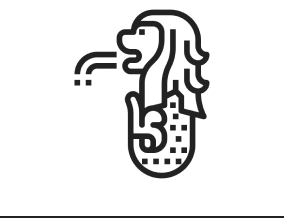Effective data visualization is key to transforming raw data into meaningful insights. Whether you’re working with sales reports, customer behavior, or performance metrics, presenting your data clearly helps your audience grasp the story behind the numbers.
However, using the wrong type of chart can lead to confusion or even misinterpretation. Each chart serves a specific purpose, and understanding when to use the right one is crucial for accurate, impactful communication.
This guide covers 12 essential types of charts used in data visualization — complete with practical examples to help you decide which chart works best for your data.
1. Bar Chart
Ideal for: Comparing quantities across categories
Bar charts display rectangular bars of equal width but varying heights (or lengths), making it easy to compare values side by side.
Use it when:
- Comparing revenue across departments
- Showing survey results by category
- Analyzing product performance
2. Column Chart
Ideal for: Tracking changes over time
Column charts are like bar charts, but vertical. They’re particularly effective when your data is time-based and you want to show growth or decline.
Use it when:
- Presenting monthly sales data
- Showing yearly comparisons
- Tracking customer acquisition over time
3. Line Chart
Ideal for: Showing trends and changes over time
A line chart connects data points with lines to illustrate continuous movement, making trends easy to identify.
Use it when:
- Monitoring website traffic
- Tracking temperature changes
- Displaying financial trends
4. Pie Chart
Ideal for: Showing proportions or percentage distribution
Pie charts break down data into slices that represent parts of a whole. They’re most effective with a small number of categories.
Use it when:
- Showing budget allocation
- Displaying market share
- Breaking down survey responses
5. Donut Chart
Ideal for: A modern alternative to pie charts with central space for extra data
Donut charts offer a cleaner visual than pie charts and often include a metric or total in the center.
Use it when:
- Visualizing simple percentage breakdowns
- Displaying KPIs with supporting data
- Comparing a few key segments
6. Area Chart
Ideal for: Showing cumulative totals or part-to-whole relationships over time
Area charts look like line charts but with the area under the line filled in. They’re great for showing volume over time.
Use it when:
- Illustrating stacked values
- Showing contributions to a total
- Analyzing trends in volume or quantity
7. Scatter Plot
Ideal for: Visualizing relationships or correlations between variables
A scatter plot places points on an X and Y axis to show how much one variable is affected by another.
Use it when:
- Analyzing performance metrics
- Exploring patterns in large datasets
- Investigating cause and effect
8. Histogram
Ideal for: Showing frequency distribution
A histogram displays the distribution of numerical data by grouping values into intervals (or bins).
Use it when:
- Examining exam scores
- Visualizing age ranges
- Analyzing product ratings
9. Heatmap
Ideal for: Representing intensity or density of data values
Heatmaps use color to communicate values, making it easy to spot highs, lows, and patterns at a glance.
Use it when:
- Displaying website click data
- Showing correlation matrices
- Analyzing sales by location and time
10. Bubble Chart
Ideal for: Adding a third dimension to data
A bubble chart builds on a scatter plot by varying the size of the data points (bubbles) to represent an additional variable.
Use it when:
- Comparing financial performance (revenue, profit, market size)
- Visualizing risk vs. return
- Analyzing survey results with multiple variables
11. Gantt Chart
Ideal for: Project planning and scheduling
Gantt charts show tasks over time, making them perfect for managing timelines and team responsibilities.
Use it when:
- Tracking project milestones
- Managing workflows
- Assigning deadlines and dependencies
12. Waterfall Chart
Ideal for: Displaying cumulative effects of sequential changes
A waterfall chart helps visualize how an initial value is affected by a series of intermediate values.
Use it when:
- Breaking down profit margins
- Explaining budget changes
- Analyzing financial performance step by step
Conclusion
Choosing the right chart is more than just a design decision — it’s a critical step in telling a clear, accurate story with your data. Each chart type has its own strengths and ideal use cases, from tracking trends over time with line charts to visualizing part-to-whole relationships with pie or donut charts.
By understanding the unique purpose of each of these 12 chart types, you can present your data in a way that not only informs but also engages your audience. The goal of any visualization is clarity — and when you match your data to the right visual, you empower better decisions and deeper insights.

Vivek Bisht
Sr. Content Writer






